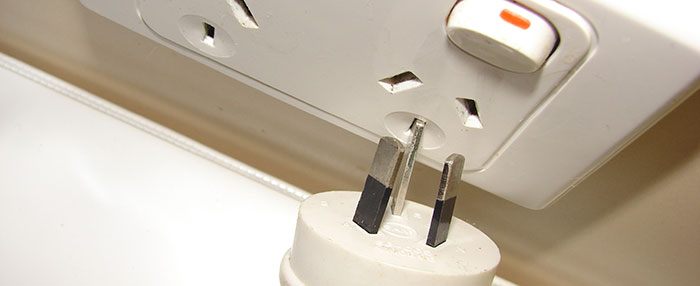
So you’re planning an overseas trip and hoping to bring your phone, laptop, hairdryer… all the essentials. However, because there is no standardized international electric voltage, you can’t simply plug your devices in. Fortunately, with some simple preparation you can bring your electronics and/or appliances along without worrying about frying their circuits. Here’s an overview of what you should know about electricity conversion when traveling:
Fortunately, most modern devices and electronics – laptops, e-readers, smartphones, cameras, etc. – are multi-voltage, meaning that they automatically adjust to the different voltage; their labels will read and you’ll only need a plug adapter for these. Additionally, some other travel-friendly electrical appliances – hair dryers, steam irons, hair irons, electric toothbrushes, etc. – also may be dual-voltage. These require you to manually switch the device to 220V for international use; their labels will read “120/240V.” Please note:Not switching a dual-voltage device to the proper voltage before you use it can result in damage to it and to possibly blowing fuses in the room.
You will only need a converter or transformer if you are bringing a single-voltage device. Single-voltage electric devices (those using heat or mechanical motors, i.e. hairdryers and electric razors) will require a converter, while single-voltage electronic devices (those using chips or circuits, i.e. mobile devices and battery chargers) will require a transformer. You will need to check your appliance’s label for the voltage and the wattage (written “watts” or “W”) in order to choose the right converter.
If you have specific questions, it’s best check with the manufacturer of the device(s) you want to use. Hopefully these tips help you enjoy a plugged-in, powered-up vacation.
By using this website you are agreeing to our Cookie Policy.